Hi folks,
Well, it is coming up to Christmas Holidays and one of the unfortunate problems at Christmas and over the holidays is a distinct increase in vandalism and break-ins. Regrettably the Sunshine Coast is not immune to these problems. With the population growth comes an increase in crime. One of the things we love about the Coast is that it is safe and family friendly but sometimes this can lull one into a false sense of security.
So, what I wanted to do was go over some security safety tips and some of the security technology that may help keep your family and your possessions that little bit safer in these changing times. I also have included, at the end, some explanation of the basic technologies in layman’s terms for those that want to understand it a bit better.
SECURITY TIPS AND TRICKS
Let’s start with a reminder of the simplest actions you can take which are physical barriers to theft:
• Lock the doors, front and back, side and garage. Lock your windows and that includes first floor and second floor windows and doors too.
• Security Screens are a very good idea for any windows you want to leave open
• When entertaining over Christmas keep the front door locked if you are out the back and the back door locked if you are out the front.
• Make sure you keep your garage roller door closed and especially don’t leave items like bikes visible.
• If you have Xmas presents in the car, cover them so they are out of sight.
Now let’s cover some of the security technology that can help.
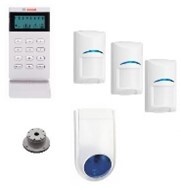
Alarm systems with detectors and a siren/strobe light at the front of the house can definitely act as a good deterrent to opportunist theft and the Bosch and Paradox systems both have smart phone apps so you can get alerts directly or redirect them to a monitoring service if you are away. There are now several outdoor alarm detectors as well as pet friendly detectors that will detect people but not pets.
And an important feature is most keypads also have a panic button you can use to trigger the alarm in the event of a threat when in your home.
Wireless technology is getting better and better and there are a number of cost effective, wireless alarm systems and accessories we can install in most homes. Most homes usually require 4 detectors but to keep costs down we have kits that start with just 2 detectors.
Some basic security equipment terms explained.
Like all subjects these days, there are a lot of terms and abbreviations that people just assume are known when in fact they have never been explained. Sometimes you have a rough idea, but maybe there is that sneaking suspicion you might have missed something.
So, lets tackle just a few of the key terms that are most often bandied about but not fully understood.
I want to touch on the key parts of a security system because I find that there is an assumption that most people know what all the terms and abbreviations mean but in talking to our customers, I find that rarely has anyone taken the time to explain the equipment in layman’s terms, and people really appreciate that we take the time to do this. So here is an overview of Alarm Systems and Security Camera systems.
ALARM SYSTEMS
First, with alarm systems, a key component is the motion sensor or detector. It is tricky that the same item is called by different names. Firstly, here is a picture of a motion sensor so you know what I am talking about. This device is usually mounted in the corner of a room and when you walk into the room a little light (usually red or blue) comes on momentarily that shows that the detector is working.
There are different types of motion sensors but they all basically do what the name says, they sense or detect motion if someone enters the room. You could just as easily say it is a “motion detector” because it detects when someone enters the room.
PIR Sensor Technology

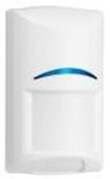
One of the most common types of motion sensor or detector is a Passive Infrared Sensor (abbreviated to PIR sensor). It works by detecting body heat. Technically it is designed to detect infrared radiation from a warm human body.
The better PIR motion sensors have more than 1 Passive Infrared Sensor inside and it takes multiple measurements to ensure it doesn’t react to a heater, air conditioner, sunlight, headlights, etc.
Following on from this you have what is usually called the ”Pet Friendly” PIR Motion Sensors and these are set up so as to ignore pets under 35KG and lower to the ground, so they just detect upright humans.
Dual Sensor Technology

Taking it a step further the next most common type of motion sensor uses two technologies in the one sensor. It has PIR sensors and Microwave sensors.
This type of sensor is called by many different names by security manufacturers (for example Bosch calls theirs a Tri-tech), but basically these use PIR sensors combined with microwave sensors (think very low power, radar waves, that detects reflections bouncing off moving items and ignores stationary items)
By the sensor comparing both detection methods you get quick detection of intruders and are less likely to have a false alarm.
The other basic parts of an alarm system are:
1. Alarm Panel – usually a steel box with a circuit board, a backup battery, a wireless receiver and all the connection wires running into it. This is normally hidden in a cupboard, and it plugs into a 240v power point.
2. Strobe/Siren – These days they are usually a slim line box with a blue light that flashes when the alarm is triggered with a siren inside. This is normally mounted on the front of the house or business
3. Keypad – This is the little control panel with a code pad on it that is used to arm and disarm the alarm and program the alarm system. It needs to be positioned where it is easy to get to when coming and going. The LED ones are best (in my opinion) as they are much easier to read due to their bright display.
NOW ONTO SECURITY CAMERAS
Yes, security cameras are becoming one of the best ways to discourage thieves and also to identify them so the Police can catch them and they don’t do it again. We only recommend wired CCTV cameras, not wireless, for reliability. There are so many options now that we can always find something that suits the situation and the budget. You can have just 1 camera at the front, or one front and back, even right up to 32 cameras! The most popular is a 4 camera system.
There are now available, low light colour cameras, which means you can get full colour coverage at night. You can get number plate cameras, 360 degree cameras and there is a new 180 degree long range camera that will cover the whole front yard or back yard on one camera.
The biggest advance in security cameras has been the facial recognition software that allows the system to only react, record and notify you if the camera detects a face you haven’t authorised. These cameras are now very affordable.
Every home, every family and every small business have their own particular requirements when it comes to security. It is never a “one size fits all”. Our security consultations are free and the proper security advice is invaluable in getting it right for you. We are fully licensed and qualified not only to install the equipment but also licensed to give security advice.
If security is important to you then call us for an on-site consultation and estimate.
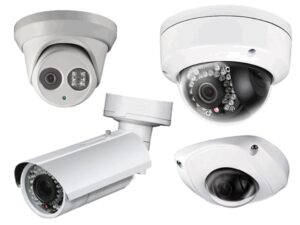
Security Camera Systems are known as CCTV or Video Surveillance systems.
They are pretty straightforward but there are still a few terms and abbreviations that trip people up so here goes.
CCTV
First what does CCTV mean – it stands for Closed Circuit Television System and the name clearly distinguishes it from Free to Air Television (FTA) systems – the regular TV we all grew up with.
CCTV when it first came out in 1949 they used cameras connected by cables direct to monitors and it could only be viewed from within the premises in which it was installed. Because no-one else from outside the building could access the camera images it was called a Closed Circuit because it was “closed” to anybody from the outside. It was like having a private TV station in your home or office that only you could view. Technically today it is still a Closed Circuit TV System but with the advances in networking of cameras it is also now accessible from outside the home or office and in fact anywhere on the network or internet, providing you have the required App downloaded and passwords. So, Video Surveillance is probably the more accurate description for today.
There are two main types of Cameras:
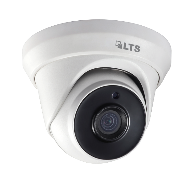
Analogue Cameras now called TVI cameras TVI stands for Transport Video Interface and is the latest technology in HD analogue transmission. It offers the same plug and play ease of install associated with a standard definition analogue system but is capable of delivering up to 1080p (2.1 Megapixels) resolution images. It has to be connected to a local recording device. (New advances have pushed resolution up to 5 Megapixels)
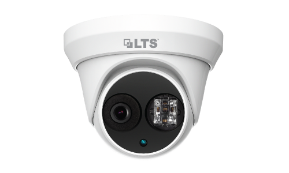
IP Cameras – IP stands for Internet Protocol camera, which is a digital security camera that receives and sends video footage via an IP network. They usually are connected to a local Networked recorder that also powers the camera, but, IP cameras do not always require a local recording device, only a local network and more importantly, IP cameras can record in much higher definition than analogue,4 Megapixels is most common but they can now go up to 8 Megapixels which is 4K quality.
The Security Video Recorder
There are 3 types of recording devices used in CCTV recording
1. Older systems and lower cost systems use a DVR – Digital Video Recorder, to record the video footage from the cameras. This is an analogue recorder with analogue TVI cameras, and it records only onto a Hard Drive and is not connected to the internet. It’s a very reliable systems but limited to Full High Definition, (Maximum 5 MegaPixel)
2. Newer systems use an NVR – Network Video Recorder, and this records digital Video footage from IP cameras (IP stands for Internet Protocol). For you that means they are digital cameras that work over your computer network and the internet. Digital cameras and recordings have increased in picture clarity from Full High Definition, 2 Megapixel, up to 4K 8 Megapixel. An NVR still records onto its Hard Drive but can also upload recordings to the cloud and can be accessed remotely from your PC, Laptop or Smart Phone.
3. We now also have what I would call hybrid DVR’s that record using existing analogue cameras but can also have up to 2 IP cameras connected which can be accessed over the network or internet. They are a good solution to upgrading an existing DVR system without having to change all the cameras.
The NVR and all the features in it are the real brains of the Security System and the quality of that device determines the reliability and length of service of the system.
Video Security Camera Resolution
The clarity of the video camera image is very important, however always going for the very latest and greatest camera with the highest resolution is not necessarily the best choice. First let’s cover the key camera terms:
2MP cameras are 2 Megapixel which means there are 2 million pixels in each image it records and that is a very clear picture.
Next is a 4MP camera which is 4 Megapixel which means almost 4 million pixels per image which is even clearer.
(Note that from this point the main benefit with the higher resolutions is that the images can be zoomed in to very close-up without losing clarity, but for most users the higher resolutions are not really needed.)
Then we have 6MP which is 6 million pixels per image.
Then at 8MP we have 8 Megapixels and these are referred to as 4K cameras.
And onto 12MP which is 12 million pixels per image.
The draw back with higher resolution cameras is that they require much larger hard drives and when accessing over the network or internet you are using a lot more bandwidth which can slow things down considerably.
A good compromise is the 4MP or the 6MP cameras, these are the ones we use the most.
I hope that you found the information useful and that it gives you a better grip on the technology terms.
They say that “knowledge is power” so I hope I have helped to empower you.
As always, we are here to provide you the very best advice and service. Please give us a call if you have the need for any security systems before the holiday season.
HOLIDAY HOURS
Our office will be closed from 3pm on Friday 23rd Dec 2022
We will re-open with skeleton crew on the 28th, 29th & 30th Dec 2022 should you need our assistance over the Christmas period
We look forward to being back on board at 9am on Tuesday 3rd January 2023, in full swing and ready for whatever 2023 brings
Wishing you and your family the very best for the Holiday Season.
Phil, Mandy and the Sunshine Antenna Service team.
